Missing pieces: Lost and stolen guns used in thousands of crimes
9Wants to Know analyzed data in Colorado and found at least 800 guns were stolen out of cars in Denver from 2008 to 2015. Many were later used in more violent crimes.
KUSA
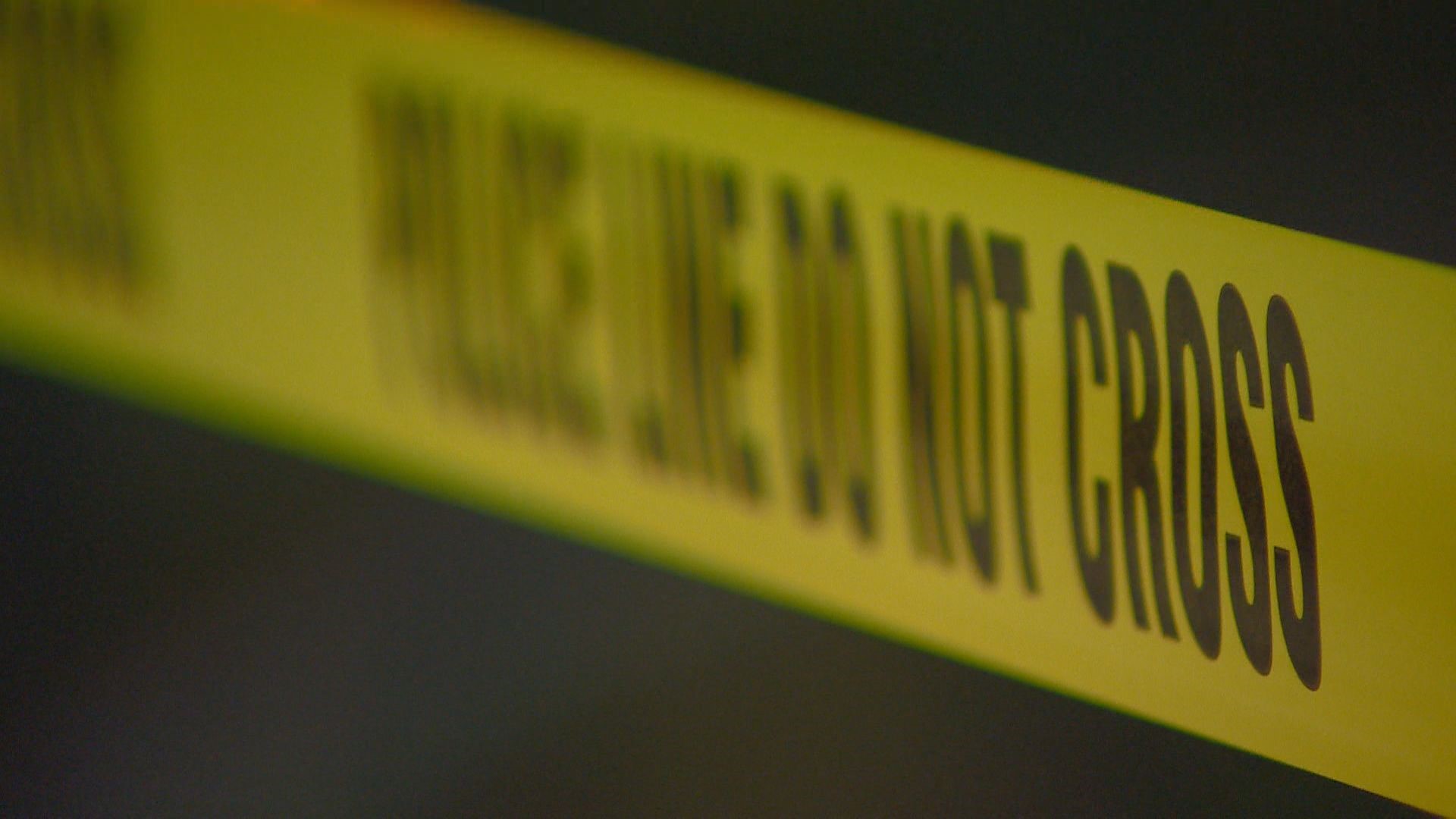
Editor's note: 9Wants to Know first aired this investigation on Nov. 21, 2017. The Denver Police Department on Monday, Sept. 24 released new data about the rising problem of legally-purchased stolen guns used in metro-area crimes. Click/tap here to read about the new data.
Thousands of crimes across the country are committed using guns stolen from lawful gun owners’ homes, cars and gun stores. That's according to an analysis of crime data --- and the number of stolen guns are rising each year.
9Wants to Know partnered with local NBC news stations and the nonprofit news organization The Trace to analyze records from more than 1,000 law enforcement offices across the country to try and connect stolen guns to crimes.


“It’s absolutely what law enforcement has known all along,” said Colorado’s U.S. attorney Bob Troyer. “These guns are going into the hands of criminals who want them, who buy them, who trade for them so they can use them in crimes.”
9Wants to Know analyzed data in Colorado and found at least 800 guns were stolen out of cars in Denver from 2008 to 2015. Many were later used in more violent crimes.
The yearlong investigation found more than 23,000 lost and stolen guns were recovered by police from 2010 to 2016, the vast majority connected to crimes.
The black market of weapons has increased in size as more weapons are reported stolen from lawful owners year after year, leading some law enforcement officers around the country to ask gun owners and gun dealers to better protect themselves and lock their weapons.
“Somebody’s going to get killed and I don’t think the general public really wants to see any more of that right now,” said Debbie Livingston, special agent in charge of the Denver field division for the Bureau of Alcohol, Tobacco, Firearms and Explosives.

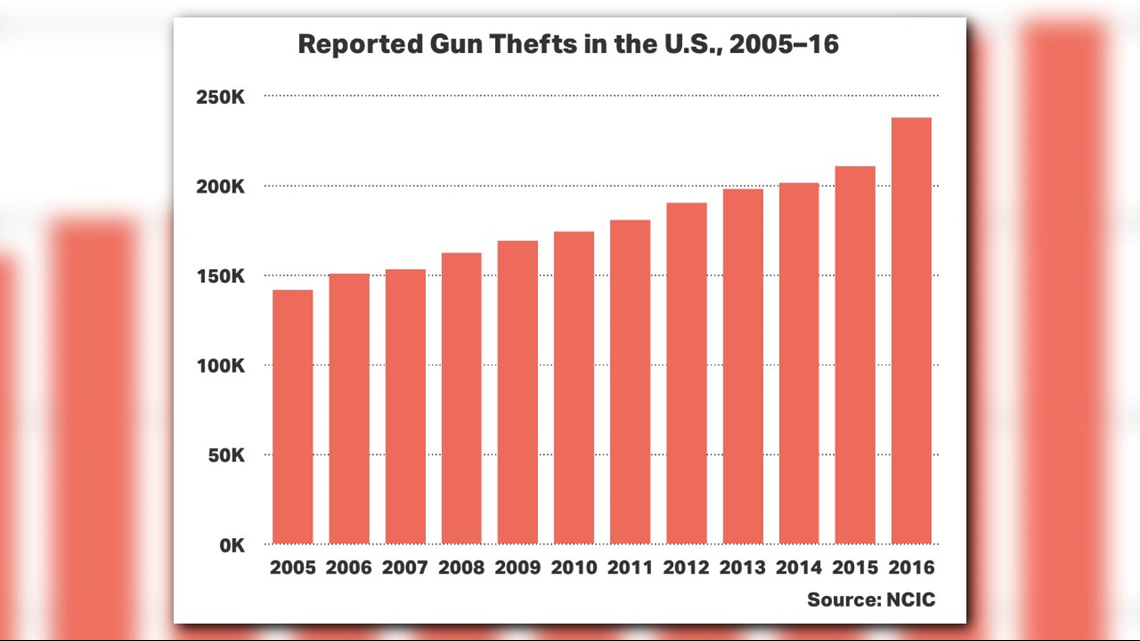
More than 237,000 guns nationwide were reported stolen to the National Crime Information Center in 2016, a database maintained by the FBI. That represents a 68 percent increase in stolen weapons reported to the FBI since 2005. Some of the increase may be attributed to better reporting from local law enforcement.
The FBI database suggests nearly two million weapons have been stolen around the country in the last decade.
9Wants to Know found that police took at least 617 lost or stolen guns into evidence in Colorado, including at least 394 guns in Denver since 2010. This provides a narrow glimpse of the total number of illegal weapons used in crimes, as many weapons are not traceable, and the data is incomplete.
“All of these things are going into the hands of criminals that are committing other crimes with this particular kind of property down the line,” Troyer said.
Legal gun owners robbed, guns used in homicides
Aurora Police responded to a home robbery around 8 p.m. one evening in June 2013. According to a police report, the homeowner found a key broken off in the lock. Among the items taken were two handguns and two rifles. The victim reported the weapons stolen, including the make, model and serial numbers, to APD. That information was entered into state and national databases.
On May 19, 2014, a woman ran into an emergency room shouting “they shot him!”
Marcus Armstrong-Roman had been shot during a drug deal; he was pronounced dead at 2:50 a.m.

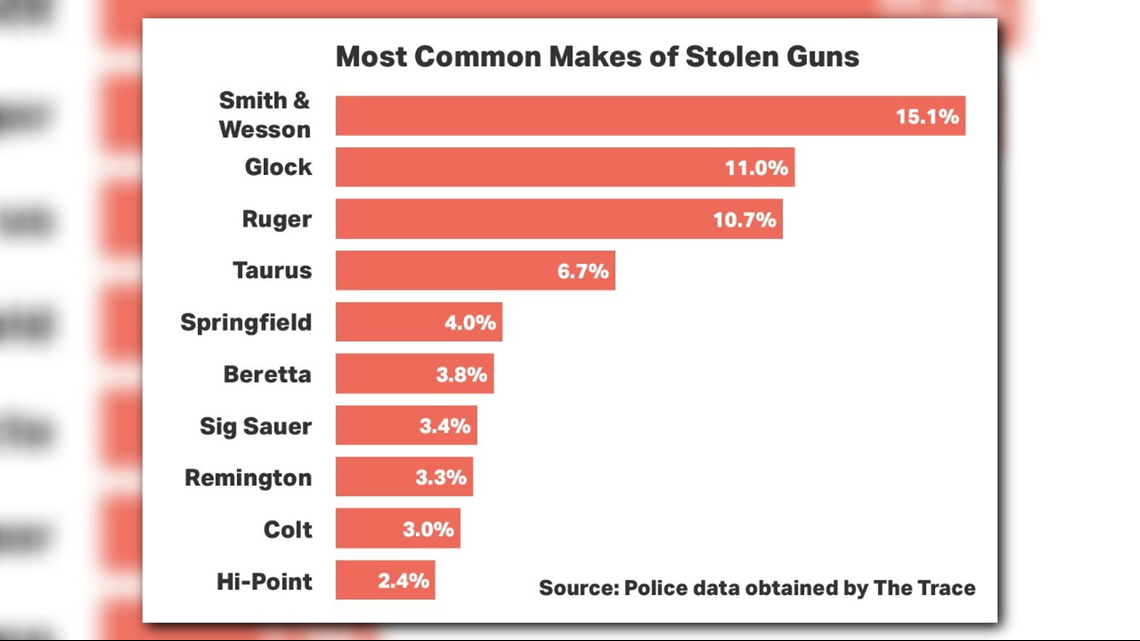
Days later, Denver police officers found a crack pipe in the pocket of Nicholas Davis during a traffic stop. When they searched his car, they found a .40-caliber handgun. It matched one of the handguns taken from the Aurora home a year earlier. It also matched the shell casings from the bullets used to murder Marcus Armstrong-Roman.
9Wants to Know identified at least four murders committed using stolen guns in Colorado since 2012. In one case, the theft was reported just eight days before the homicide. In another, the weapon was stolen three years before the murder.
Jesse Oliver was convicted for murdering Robert Brown and paralyzing then-17-year-old Aysia Quinn in front of Brown’s Montbello home on Sept. 16, 2015. The weapon used, a Smith and Wesson handgun, had been reported stolen from a house in Douglas County two years before the shooting.
Brandon Moore, who had legally purchased the weapon, said he didn’t know the firearm stolen from his home had been used in a murder.
“Are you serious?” he said in an interview with reporter Brian Freskos with The Trace. “That’s exactly why I reported it stolen, because I was afraid something like that was going to happen.”
“He knew he was gonna die by a bullet.”
Renay Brown said she raised her nephew, Robert “Bobby” Brown, from the time he was a small child.

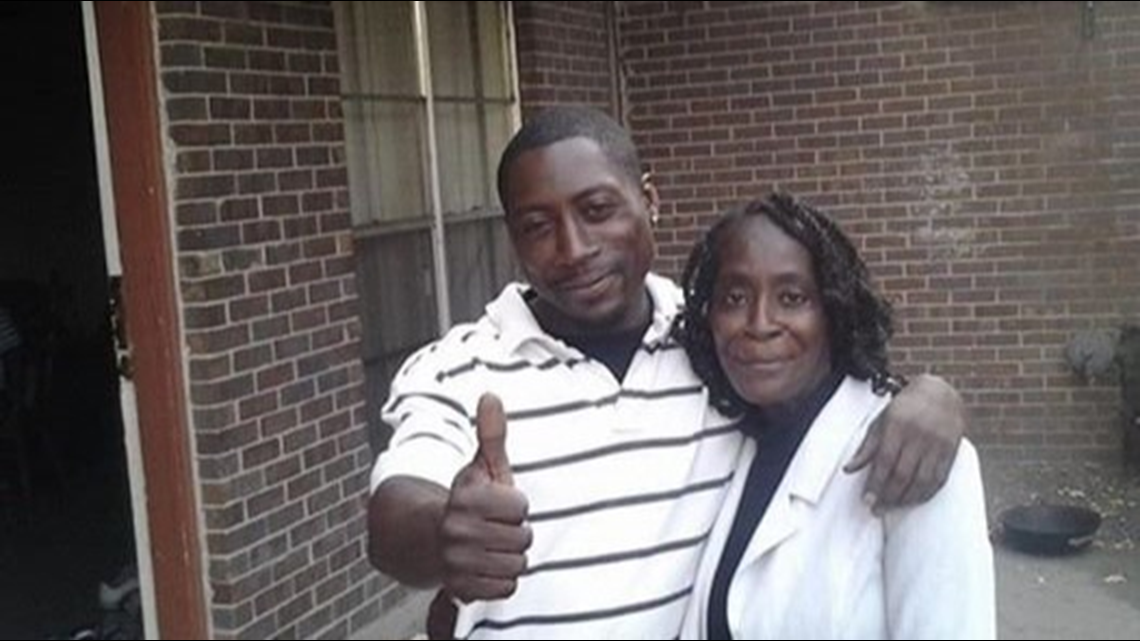
“He said, ‘you know what Aunt Renay? I’m gonna die by a bullet,” Brown said of her nephew. “And that’s exactly what happened.”
On Sept. 16, 2015, Bobby Brown had an argument with a neighbor outside his home. He walked to his car to get some cigarettes, according to police reports, when neighbors heard six to eight gunshots.

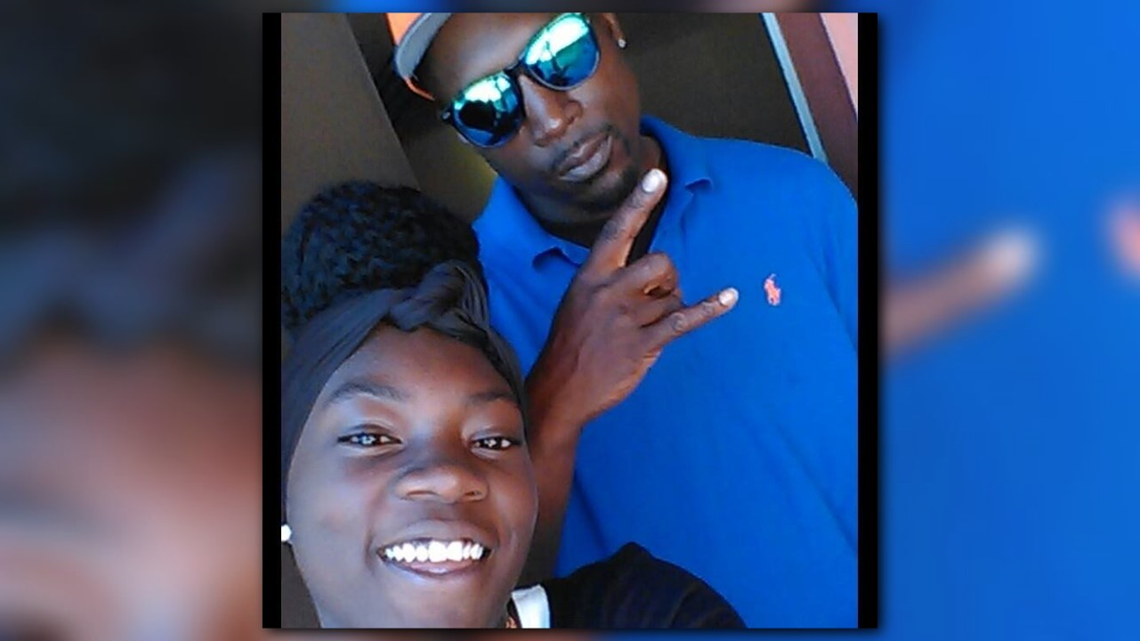
Bob Brown’s teenage daughter, Shanice Brown, told 9Wants to Know and The Trace that she went outside to ask her father to keep his voice down when she saw him get struck by bullets. She says she saw her father’s body crumble to the ground.
“The moment I went out there was the moment those shots went off,” Shanice said. “It was like chaos. I was in shock.”


Behind Brown, Aysia Quinn was going down the outdoor stairs of the apartment complex.
“I actually did hear gunshots, but in Montbello you always hear gunshots, so I didn’t think that it was that close,” Quinn said. “They were telling me like, ‘run, what are you doing?’ That’s when I realized like ‘oh, snap, they are shooting right here.’”
Quinn was struck in her side, bullet fragments broke off in her spine.
The shooter took off running, but a police officer who was already in the area saw someone running from the scene. As he called for support, the officer followed Jesse Oliver and caught up to him within minutes. Oliver was identified by witnesses as the shooter, and a month later a weapon was found in the backyard of a house near the location of the shooting.


The weapon was matched to a gun that had been reported stolen from a home in Douglas County. It also matched the bullets used to kill Brown and paralyze Quinn.
Quinn didn’t know that the weapon used had been stolen from a home, but said she wasn’t surprised. She knew the shooter, Jesse Oliver, had a significant criminal history including prior felonies.
“I should have figured that it was stolen,” Quinn said. “You can get a gun from anywhere... it’s easy to get a gun nowadays.”
“How are these guns getting here?”
“You want to stop the guns yet? You want to stop this, you want to cut this out? How are these guns getting here?” said Renay Brown.

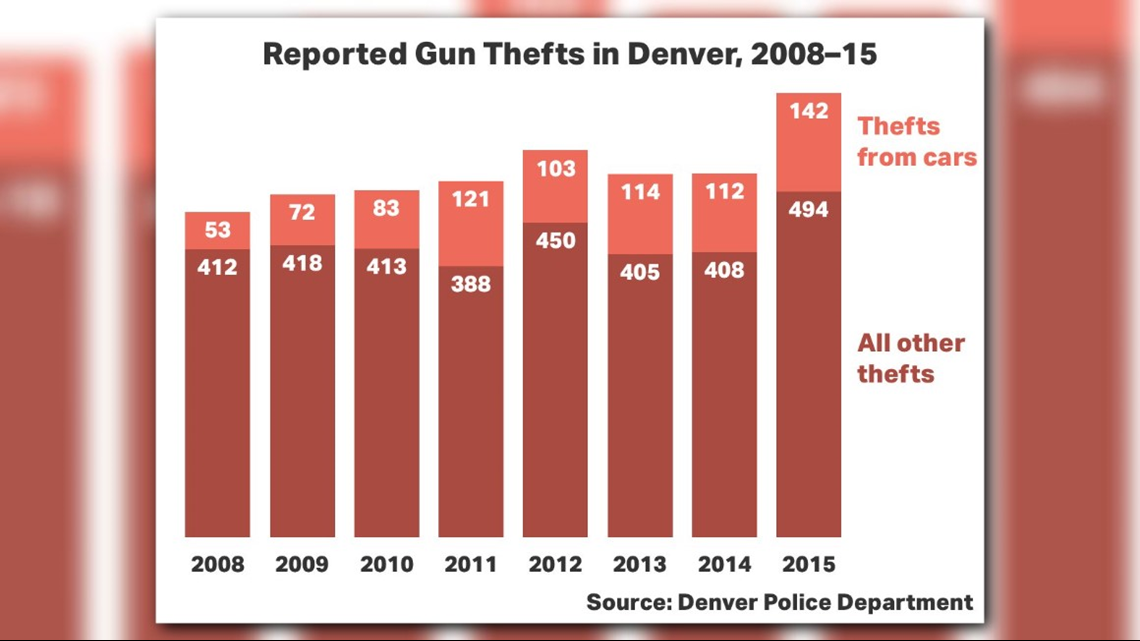
“You make a couple of telephone calls now and you can get a gun. Hell, I can make a telephone call right now and get a gun. That’s how easy it is. So how are these guns getting here?”
9Wants to Know reviewed thousands of police records to find that many guns are in the hands of felons or others who would not be legally able to own a gun, but were taken from legal gun owners.
According to Denver police records, more than 4,100 guns were reported lost or stolen in this city from 2008 to 2015.
At least 800 of those were stolen out of vehicles.
“It’s not just a Colorado trend, it’s a nationwide trend.”
The U.S. Attorney’s Office provided records that suggest more than 400 guns were stolen from gun stores in Colorado in 2017 alone. Prosecuting gun store thefts has become the top priority for U.S. Attorney Bob Troyer.

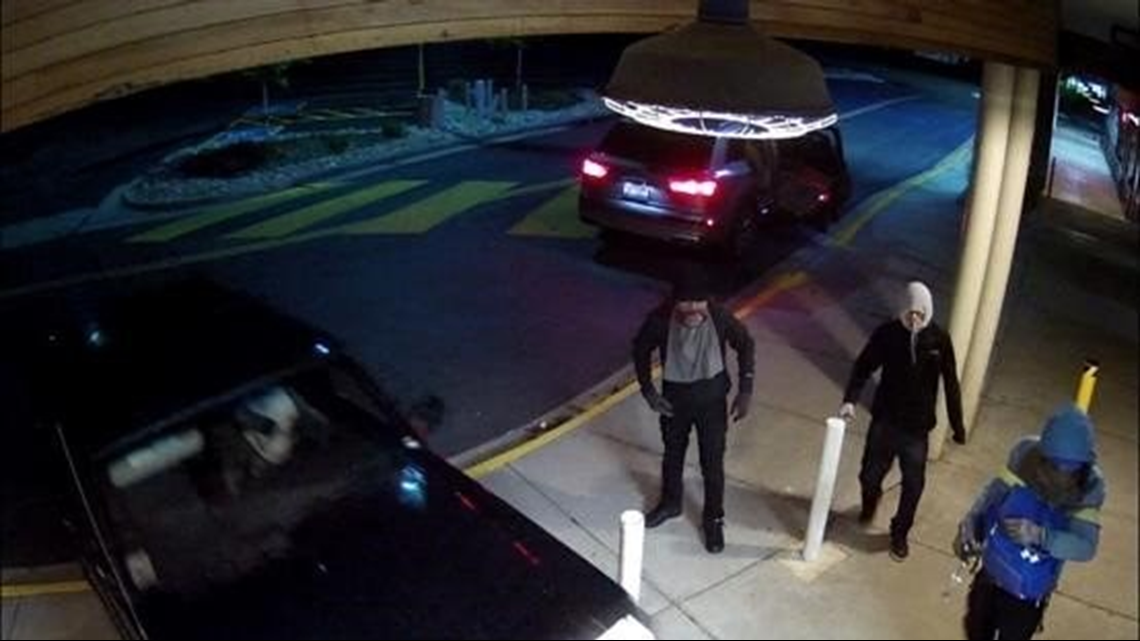
“The best way to suppress it is to prosecute these people,” Troyer said. “There’s no higher priority, there is no bigger potential impact on public safety, then a single act like that.”


“We are not seeing a spike in gun store thefts because it’s hunting season,” Troyer continued.
The ATF partners with local law enforcement to help investigate gun store thefts. As of October, 16 people have been charged with stealing guns from at least seven gun stores in Colorado over the last year.
“It’s not just a Colorado trend, it’s a nationwide trend,” Debbie Livingston, ATF special agent in charge said.
The ATF does not regulate the way gun stores secure themselves, and is only able to make recommendations. Livingston thinks some stores could do more to ensure they are not easy targets.


“There’s a host of things they can do, but they all cost money,” Livingston said. “It’s only a recommendation, but locking up the entire inventory, every night, it’s time consuming, but it would be helpful.”
Gun store thefts frequently get more media attention, but they're hardly the only places criminals will go to steal guns. Some say there’s more that individual gun owners need to do to protect themselves and their weapons.
“There ought to be some obligation in the law for gun owners to responsibly secure their firearms,” said Sen. Richard Blumenthal, a Connecticut Democrat. “Congress should not only be looking at this issue, they ought to be acting on this issue.”
Larry Keane, senior vice president of the National Shooting Sports Foundation, said that gun owners should lock up their weapons when they’re not in use, but says criminals should be held responsible when using stolen guns.
“The focus has to be on criminals,” he said. “If they’re using stolen firearms, then there should be severe consequences from that.”
“It changed after this.”
Aysia Quinn, now 19, was told she may never walk again after the shooting on Sept. 16, 2015.

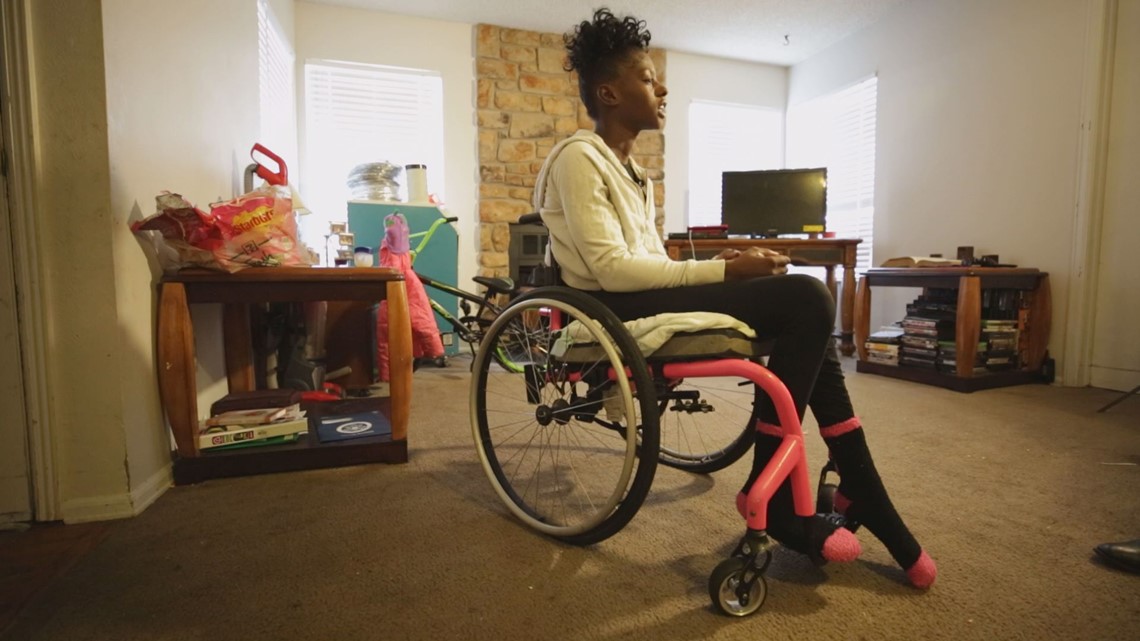
“They thought I would never have [any] feeling, and it was in a point of time where I just wanted my legs to be cut off,” Quinn said. “It is depressing to be like this; you know, one moment you have legs and you can walk, you know and the next moment you wake up and you’re paralyzed.”
“I mean, it does make me mad because it ruined the things that I wanted to do,” Quinn said. “I loved basketball, I loved dancing, and now I can’t do it.”
Two years after the shooting; however, Quinn is showing some remarkable signs of recovery.
Quinn said after physical therapy, she is able to lift one leg off the floor. She cries and prays over her legs, but has her own goals for the future.
“My goal is by 21 to be walking,” Quinn said. “I’m strong, yeah. I’m strong.”
